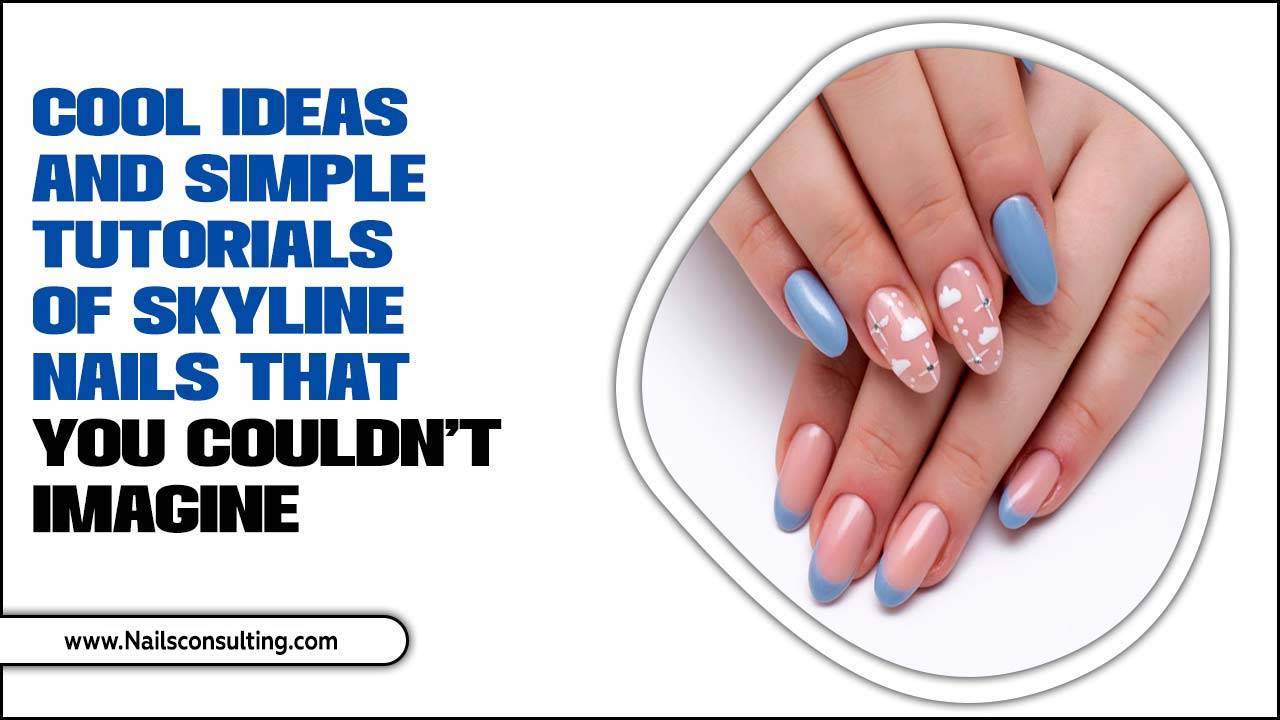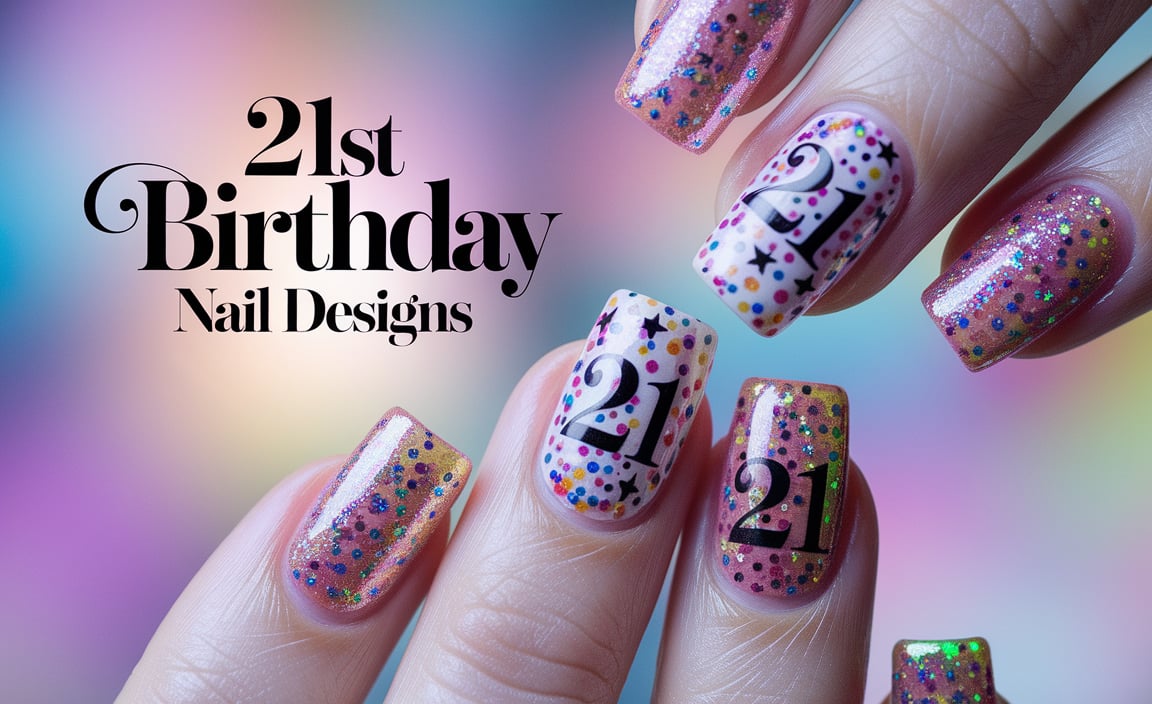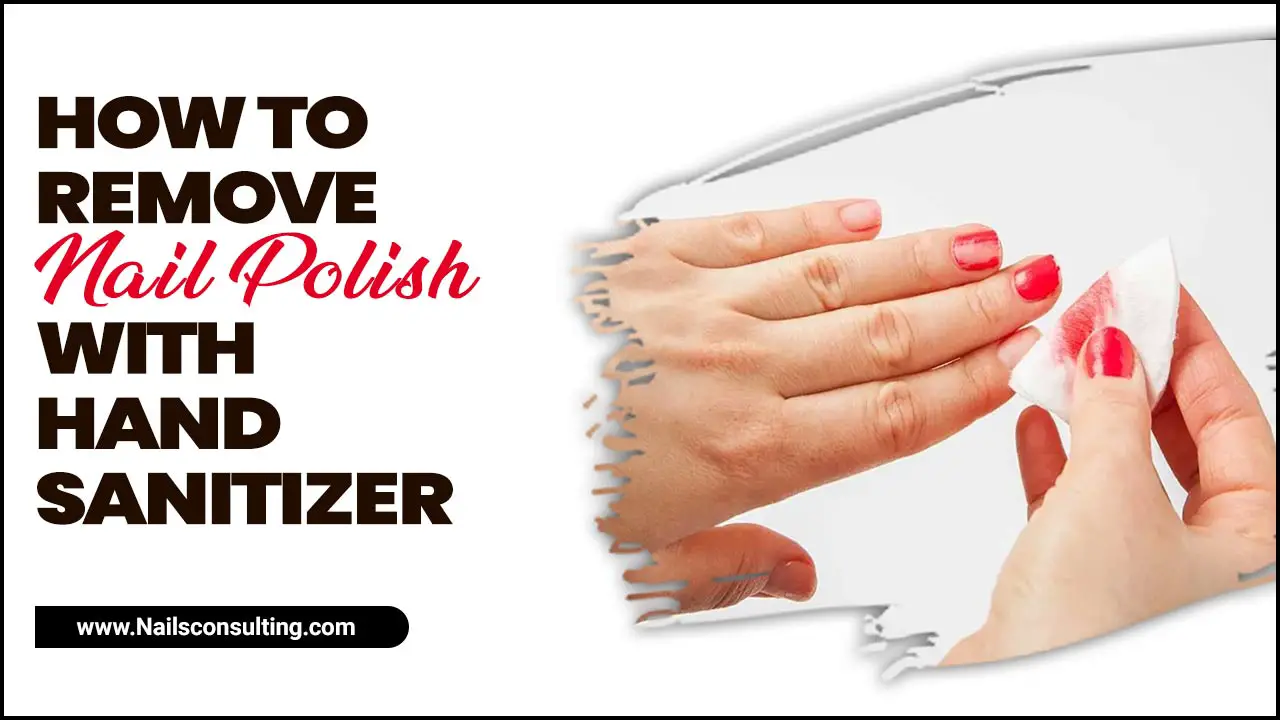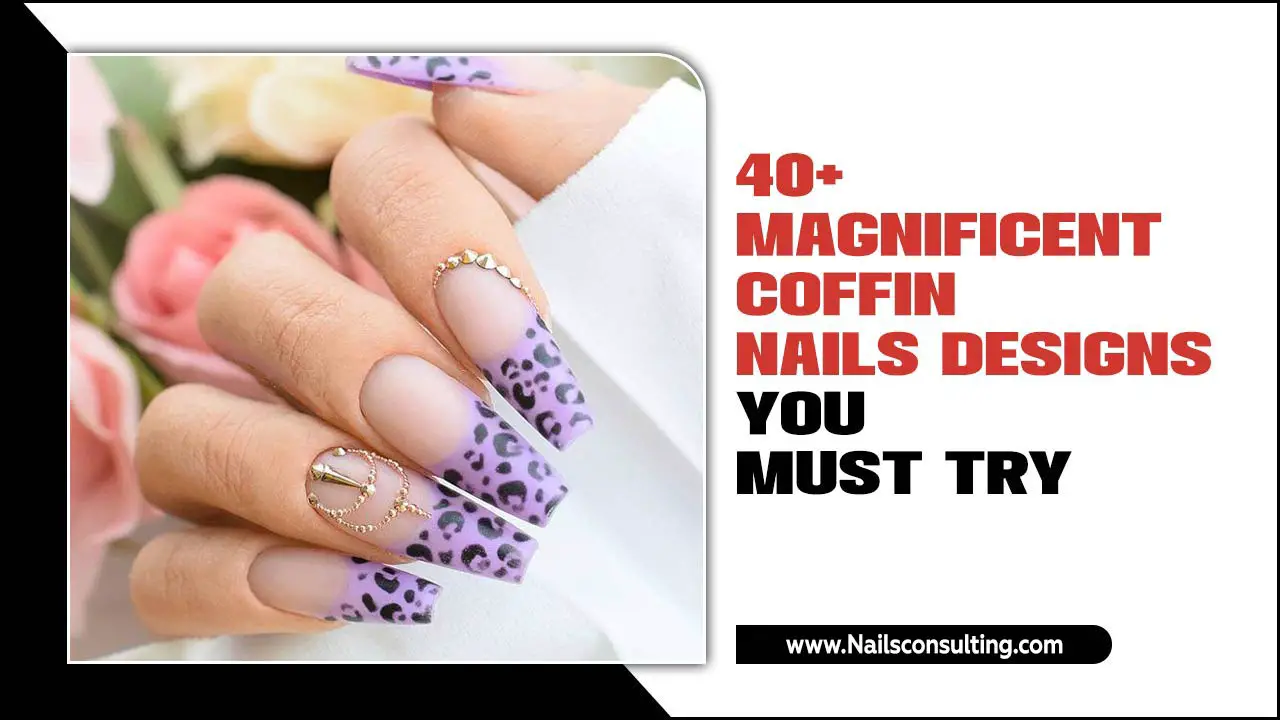Yes, you can create stunning ombre nails at home! This guide breaks down the simple steps for achieving a beautiful gradient effect using easy-to-find tools. Get ready to master the ombre trend without a salon trip.
Dreaming of those gorgeous, seamlessly blended ombre nails you see everywhere? You know, the ones where one color gracefully melts into another, creating a sophisticated and stylish look. It might seem like something only a pro could do, but guess what? You absolutely can achieve this beautiful effect right in your own home! It’s a common beauty goal, and the frustration of streaks or harsh lines is totally relatable. But don’t worry, I’m here to make it easy and fun. This guide is packed with simple, step-by-step instructions that will have you creating salon-worthy ombre nails in no time. Get ready to elevate your DIY manicure game!
Why Ombre Nails Are a Trend That Stays
The ombre nail trend has been around for a while, and it’s not going anywhere! Why? Because it’s incredibly versatile and always looks chic. Whether you’re a beginner or have been painting your nails for years, ombre offers a fantastic way to add a touch of artistry to your look. It’s like giving your nails a gentle watercolor wash. The beauty of ombre is its ability to blend colors seamlessly, creating a soft, diffused effect that’s incredibly pleasing to the eye. It’s a subtle yet impactful way to express your personal style, fitting for any occasion, from everyday wear to special events. Plus, the possibilities for color combinations are endless, allowing for boundless creativity!
What You’ll Need: Your Ombre Nail Toolkit
Gathering your supplies is the first step to a successful DIY ombre manicure. You don’t need a professional kit; most of these items are probably already in your makeup bag. Having everything ready before you start saves time and prevents interruptions, ensuring a smoother, more enjoyable process.
Here’s a list of the essential tools and products:
- Nail Polish Colors: Choose 2-3 colors that complement each other. Think classic combinations like pink to white, blue to purple, or nude to brown. You can also try contrasting colors for a bolder look!
- Makeup Sponges: A clean, dry makeup sponge (the triangular or wedge kind works best). You’ll want to cut these into smaller pieces, about 1-2 inches, so they’re easy to handle and focus on individual nails.
- Base Coat: This protects your natural nails from staining and helps your polish adhere better.
- Top Coat: To seal your design, add shine, and make it last longer.
- Nail Polish Remover: For cleaning up any mistakes.
- Cotton Swabs or an Old Makeup Brush: For precise cleanup around your cuticles.
- A Small Dish or Piece of Cardboard: To place your polish colors on before sponging.
- Optional: Glitter Polish: For an extra touch of sparkle at the tips or base.
- Optional: Cuticle Oil: To hydrate and nourish your nails after the manicure.
Choosing Your Colors: A Little More Detail
The magic of ombre lies in the color blend. For beginners, sticking to colors within the same family or shades that are close on the color wheel will ensure a smooth transition. For example:
- Pastel Ombre: Light pink, peach, and white.
- Sunset Ombre: Yellow, orange, and pink.
- Ocean Ombre: Teal, light blue, and white.
- Deep Jewel Tones: Deep purple, ruby red, and a hint of dark brown.
Don’t be afraid to experiment! The best part about DIY ombre is that if you don’t love the first try, you can easily try again.
Step-by-Step: How to Achieve Perfect Ombre Nails at Home
Ready to dive in? This technique uses a simple sponging method that builds up the color gradient beautifully. Take your time, and enjoy the process!
- Prep Your Nails: Start with clean, dry nails. Push back your cuticles gently using a cuticle pusher. Shape your nails to your desired length and style. A smooth surface is key for a flawless finish.
- Apply Base Coat: Apply one thin layer of your favorite base coat. This is a crucial step to prevent staining, especially if you’re using dark or vibrant polishes. Let it dry completely.
- Apply Your First Color (Optional but Recommended): For a smoother ombre effect and better color payoff, apply one thin coat of your lightest polish color all over the nail. This acts as a base for the gradient. Let it dry thoroughly. If you’re aiming for a very subtle ombre with very similar shades, you might skip this, but it generally helps!
- The Gradient Creation: This is where the magic happens!
- Place your chosen polish colors next to each other in stripes on your small dish or piece of cardboard. Start with your lightest color on one side and your darkest on the other, with any in-between shades in the middle. Don’t put too much polish on; a little goes a long way.
- Dab your cut makeup sponge piece into the polish stripes, picking up the colors. Gently dab the sponge onto your nail, starting from the cuticle area and moving upwards towards the tip. You want to blend the colors as you dab.
- Re-apply polish to your sponge as needed and repeat the dabbing motion on the nail until you achieve your desired gradient. It might take 2-3 applications to get the blend just right. Don’t press too hard, or you’ll just smudge the polish. A gentle tapping motion builds the color best.
- Clean Up the Edges: This is where cleanup tools come in handy! Dip a cotton swab or an old fine-tipped makeup brush into nail polish remover. Carefully trace around your cuticle and the sides of your nail to remove any excess polish that got onto your skin. This makes a huge difference in the finished look! A steady hand here is your best friend.
- Apply Top Coat: Once you’re happy with the ombre effect and the cleanup is done, apply a generous layer of clear top coat. This will seal the design, give it incredible shine, and help prevent chipping. For added durability, some people even apply two layers of top coat, letting the first one dry slightly before applying the second.
- Finishing Touches: After the top coat is completely dry (give it a good 5-10 minutes, or until it feels hard to the touch), apply a drop of cuticle oil to each nail and massage it in. This rehydrates your skin after the polish and remover, leaving your hands looking and feeling pampered.
Pro Tips for Flawless Ombre Nails
Want to take your DIY ombre skills to the next level? Here are a few insider tricks:
- Work Quickly: Nail polish dries fast, especially when applied in thin layers. Have your sponge and cleaned-up tools ready to go before you start applying the polish.
- Gentle Sponge Pressure: When dabbing the polish onto your nail, use a light touch. Too much pressure can cause the colors to blend too much, creating a muddy effect instead of a clean gradient.
- Build Color Gradually: Don’t try to get the perfect blend in one go. Apply the polish to the sponge, dab a light layer onto the nail, reapply polish to the sponge, and dab again. Layering is key for a smooth transition.
- Consider Sponge Type: While regular makeup sponges work well, some people find that cosmetic wedges offer a finer texture that can leave fewer visible lines. You can also try a nail art sponge specifically designed for gradient effects.
- Don’t Forget the Seal: A good top coat isn’t just for shine; it’s essential for making your ombre last. Make sure to cap the free edge of your nail with the top coat to prevent chipping.
- Practice Makes Perfect: Your first attempt might not be salon-perfect, and that’s okay! The more you practice, the better you’ll become at controlling the colors and achieving the smooth blend you desire.
Alternative Methods for Ombre Nails
While sponging is the most popular and beginner-friendly method, there are other ways to achieve an ombre effect:
The Brush-Only Method
This method involves a bit more artistic skill but can offer a very refined finish. It’s great for those who want to avoid using a sponge.
- Prep Nails and Base Coat: Follow steps 1 and 2 from the sponging method.
- Apply Colors with Brush: Apply your lightest color as a base. Then, using a clean, thin nail art brush or a stiff fan brush, lightly dab your darker colors onto the nail, blending them into the base color with soft, sweeping motions. You’ll need to work very quickly before the polish dries.
- Blend and Refine: Continue to gently blend the colors until you achieve your desired gradient. Add more light polish or clear top coat to the brush to help with blending.
- Clean Up and Top Coat: Clean up any stray polish and apply a top coat as usual.
Ombre with a Fan Brush (Simplified)
A fan brush can also be used to create a softer, airbrushed-like gradient.
- Prep and Base: Apply base coat and your lightest color.
- Apply Polish: Paint thin stripes of your colors directly onto a waterproof surface (like a tile or a thicker piece of plastic).
- Use the Fan Brush: Lightly dip the bristles of a clean fan brush into the polish stripes.
- Gentle Strokes: Gently sweep the brush upwards on the nail from cuticle to tip, allowing the colors to blend. You may need to reload the brush with polish and repeat the sweeping motion.
- Cleanup and Seal: Clean up edges and finish with a top coat.
Common Ombre Nail Mistakes and How to Fix Them
Even with tutorials, it’s easy to run into a few snags. Here’s how to troubleshoot:
Streaky Polish
Cause: Not enough polish on the sponge, or the sponge wasn’t dabbed enough times. The colors didn’t blend well on the sponge itself.
Fix: Apply more polish to the sponge and dab more gently and repeatedly on the nail. Try layering the colors again, focusing on blending them on the sponge before applying. Ensure your base color is completely dry. A good top coat can sometimes help smooth out minor streaking, but it’s best to fix it during application.
Harsh Lines Between Colors
Cause: The colors were applied too distinctly on the sponge, or the dabbing motion wasn’t fluid enough.
Fix: Use less polish on the sponge and blend the colors more on the sponge itself before dabbing. Focus on a continuous up-and-down dabbing motion on the nail. You can also go back with a fine brush dipped in the lighter color to softly feather the edges. A slightly thicker consistency in your polish can sometimes help here, or a polish that’s got a good self-leveling property.
Polish on Skin
Cause: Overzealous sponging or brush strokes.
Fix: This is where your cleanup tools are essential! Use a cotton swab or an old makeup brush dipped in nail polish remover to carefully wipe away any polish that landed on your skin. Doing this before the polish fully dries makes it much easier.
Dull Finish
Cause: The top coat wasn’t applied or wasn’t a good quality. The sponge created a slightly matte texture that the top coat didn’t fully cover.
Fix: Apply a generous, smooth layer of a high-shine top coat. For matte finishes, some top coats don’t adhere as well. Ensure you are using a top coat specifically designed for long wear and high shine. If your ombre started with a matte polish, a glossy top coat is crucial to bring back the shine.
Ombre Nail Inspiration
The possibilities with ombre are truly limitless! Here are a few ideas to spark your creativity:
- Glitter Fade: Start with a solid color at the cuticle and blend into a fine glitter polish towards the tip.
- Reverse Ombre: Instead of fading from cuticle to tip, create the gradient from tip to cuticle.
- Horizontal Ombre: Apply the colors horizontally across the nail for a unique look.
- Multi-Color Ombre: Use 3 or more colors for a vibrant rainbow or sunset effect.
- French Ombre (Baby Boomer Nails): A classic wedding favorite, this is a very soft pink to white gradient or a sheer nude to milky white transition. Learn more about achieving the perfect “baby boomer” look!
FAQ: Your Burning Ombre Nail Questions Answered
| Question | Answer |
|---|---|
| Can I use regular nail polish for ombre nails? | Absolutely! Regular nail polish works perfectly for DIY ombre. You’ll need at least two complementary colors, a base coat, and a top coat. |
| Does ombre look better with matte or glossy polish? | Both can look fantastic! A glossy top coat creates a classic, high-shine finish. A matte top coat gives a modern, sophisticated look. The choice depends on your personal style and the colors you use. A gloss finish often helps blend any minor imperfections. For those using matte polishes directly, a good high-shine top coat is crucial to revive the sheen. |
| How many colors are best for ombre nails? | For beginners, 2-3 colors usually work best for a smooth gradient. You can use more, but blending might become trickier. Start with colors that are close in shade or hue for the easiest transition. |
| How do I prevent my sponge from absorbing too much polish? | Don’t over-saturate the sponge. Apply thin stripes of polish to your plate. For the sponge, try lightly dabbing it into the polish stripes. You can also let the polish sit on the plate for a moment to thicken slightly before picking it up with the sponge. Some newer, denser sponges absorb less. |
| How long should I let the polish dry between layers? | Allow each layer of polish (base coat, first color, and each sponged layer) to dry to the touch before adding the next. For nail polish, “dry to the touch” usually means about 2-5 minutes, but it can vary. Rushing this step often leads to smudging and mixing of wet layers, which is not the desired blend. The top coat should be applied when the last layer of color is no longer wet. |
| Can I do ombre nails with gel polish? | Yes, you can! The sponging technique works similarly, but you’ll need to cure each layer under a UV/LED lamp. The gel polish tends to stay workable longer, facilitating blending. However, cleanup around the cuticles needs to be done before curing. For a perfectly smooth finish, some people prefer to use a special gel ombre brush or even buff the nail slightly between layers. You can find excellent tutorials on how to create gel ombre nails online. The U.S. Food and Drug Administration (FDA) offers guidance on nail salon safety, which is relevant for anyone working with UV lamps and polishes. |
Conclusion: Your Ombre Masterpiece Awaits!
See? Creating beautiful ombre nails at home is totally achievable and a lot of fun! With a little practice and the right technique, you can master this trendy manicure. Don’t be discouraged if your first attempt isn’t salon-perfect. Every nail artist started somewhere, and practice is the key to perfecting any nail art skill. Embrace the process, experiment with colors, and most importantly, enjoy expressing your unique style. You’ve got this! Now go forth and create some stunning gradient masterpieces on your fingertips. Your nails will thank you for the stylish upgrade!






